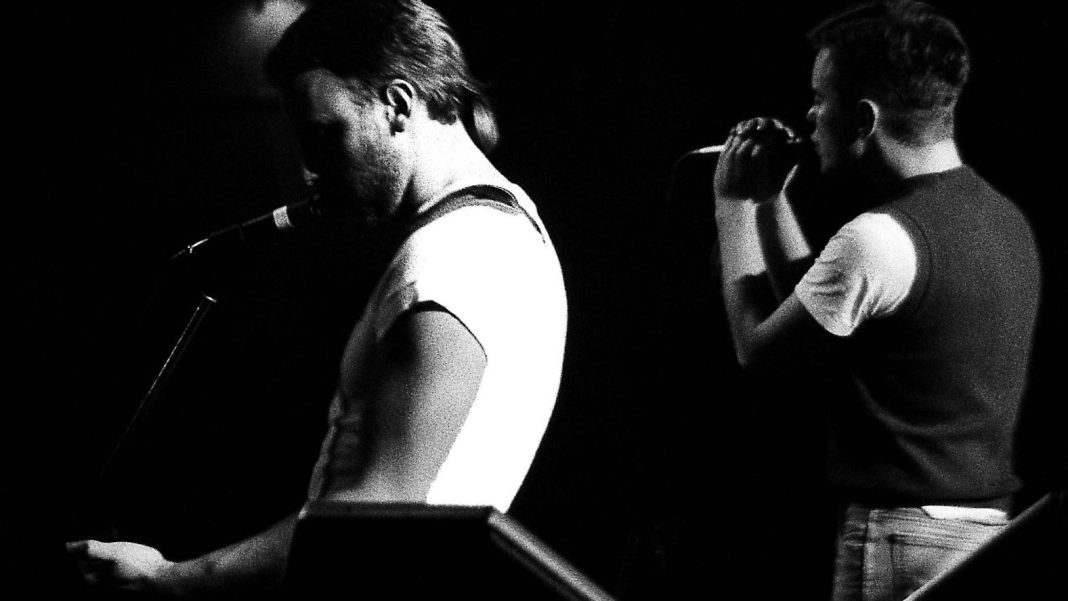Everybody knows Joy Division, everybody knows New Order. If the former’s post-punk gloom is the gateway drug for 80s bands like Bauhaus and The Cure, the latter is a divergent foray into thumping, Kraftwerk-style techno. Yet, ‘Blue Monday’, New Order’s 1983 hit, bridged the gap between restless New York clubs and a budding gothic subculture. In a hefty seven minutes and twenty-nine seconds we hear the synths and choral samples of Kraftwerk, the rhythm of Donna Summer’s ‘Our Love’ (1979), and the same bassist that underscored many of Joy Division’s most successful works.
Soon after the death of Joy Division’s lead singer and eccentric dancer, Ian Curtis, New Order was born, consisting of the remaining members of the original band as well as keyboardist Gillian Gilbert. Bernard Sumner stands out in particular, as the former guitarist of Joy Division but now the frontman of the new venture. Their first album, Movement (1981), was joined by the single ‘Ceremony’, written in the weeks before Curtis’ death and considered by many to be the last ‘true’ Joy Division song. My own father, a true music nerd and child of the 80s (as he so often likes to remind me), remembers this as his favourite song by either band.
In 1981, a visit to New York City introduced New Order to the local scene of dance music, including funk-inspired electronic beats and post-disco sounds. The wonderful 1982 track ‘Temptation’ is a personal highlight for me, acting as the precedent for later experimentation in ‘Bizarre Love Triangle’, ‘True Faith’, and of course, ‘Blue Monday.’
New Order’s discography up to 1983 is a thrilling experience for the ears, from the early riffs on Movement, laden with post-punk influences, to the techno tunes on Power, Corruption, and Lies (1983). Of the latter, one track is particularly noteworthy in the eventual creation of their magnum opus: ‘5 8 6’. The drum loops and beats are almost identical to those of ‘Blue Monday’, and both songs are exactly the same length. Not long after, ‘Blue Monday’ was written, recorded, and mastered.
For those of us who weren’t around at the time of the song’s release, we may underestimate the following it garnered. In an era where popular music was spread either via the radio, MTV, or even word of mouth, the taken-for-granted convenience of streaming platforms was cast off as an invention for the future. To this day, ‘Blue Monday’ is still the best-selling 12” single in British history. New Order had finally carved out their own place in music and popular culture, and the associations with Joy Division simply became a fun fact.
Why do I love ‘Blue Monday’ so much? It isn’t just the innovative direction the band took, nor the large instrumental sections that allow you to appreciate each element. For me, the appeal of the song lies in its enmeshing of different genres, borne out of the post-Joy Division context that the band found themselves in. Drawing inspiration from both the ‘Father of Disco’, Giorgio Moroder, and the gothic basslines of Siouxsie and the Banshees (as well as several other artists and sounds), New Order successfully merged dance and rock. Perhaps they weren’t the first to do so, but clean, crisp ‘Blue Monday’ stands out as an encapsulation of the sound that would become ‘alternative dance’.
‘Blue Monday’ didn’t just define the 80s, it continues to define music. Originally finding success in not only mainstream club-goers, but also amongst goths of the time (perhaps owing to the cold, choral echoes in the background), the track is almost a crossover hit, informed by the post-punk sensibilities of the band’s past and looking towards a modern, electronically inclined future. It perfectly balances the worlds of mainstream and alternative, of commercial success and critical acclaim.


